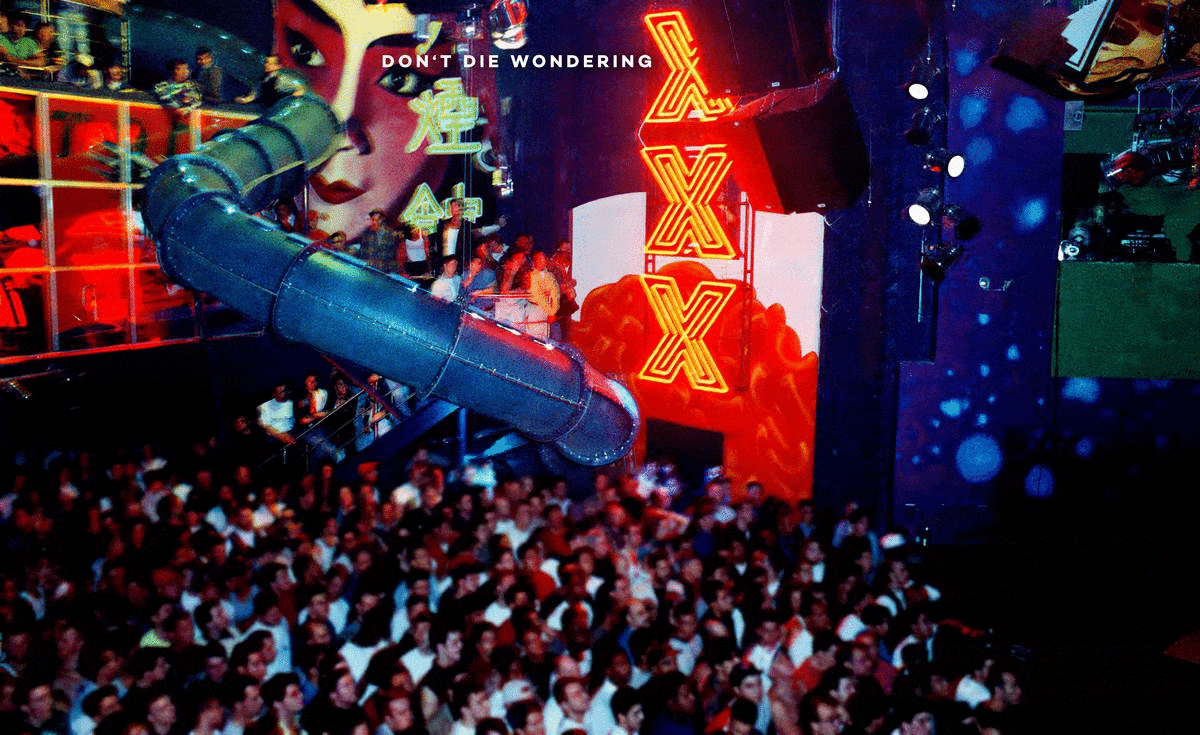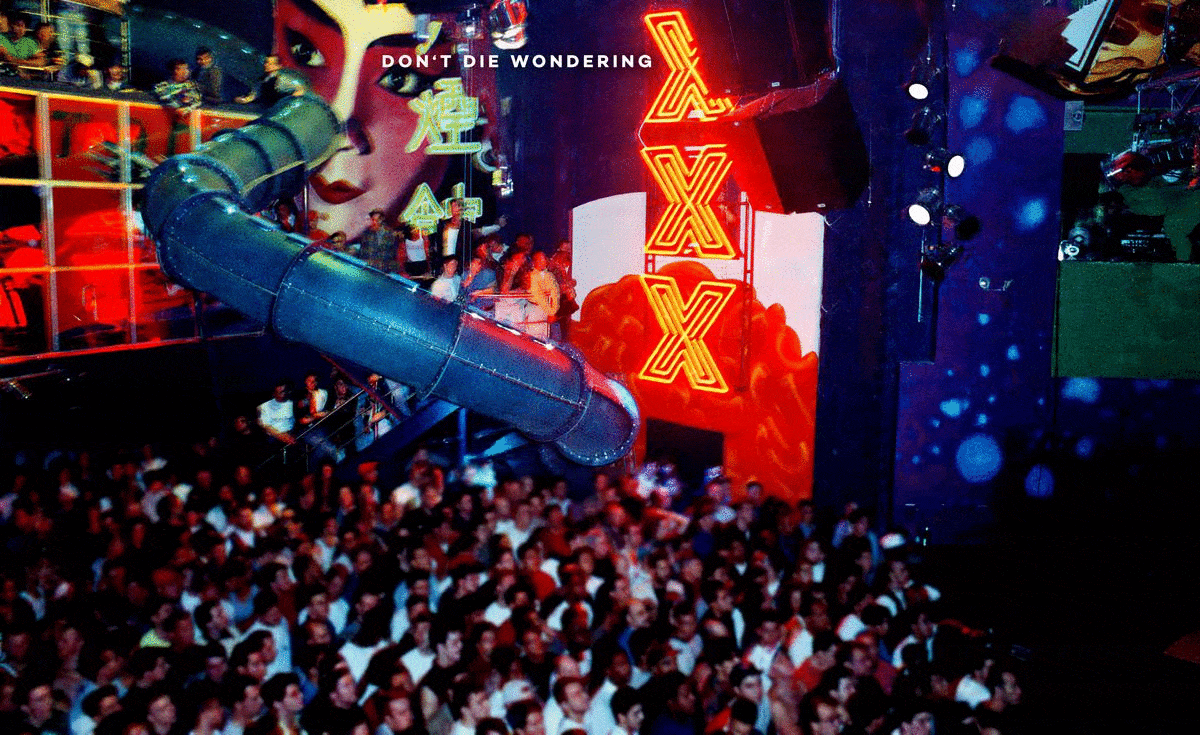Before the dawn of the social media influencer, there were Club Kids.
The New York nightlife has been a constantly developing scene over the decades, though if you happened upon any club in the New York area between the 1980s and 1990s, Club Kids were an ever-present staple of any decent nightspot. Forward-thinking, fashionable, often hedonistic and always unapologetically themselves, they represented a side of the youth that were unbothered by societal judgements – they just wanted to have a good time, and they were going to make sure that you did, too.
While the group persona and message was one of positivity and self-expression, you’d be forgiven for having an overwhelmingly negative perception of the New York Club Kids if you were yet to learn a lot about them. After all, when the group are written about in the present day, it’s usually in reference to a gruesome murder that took place in 1996 when founding Club Kids Michael Alig and Robert Riggs killed their roommate, Andre ‘Angel’ Melendez. In fact, it was this event that brought about the decline of the Club Kids era altogether.

However, one member of the group has never been comfortable having the subculture that he was a part of in his youth retrospectively tarnished in this way and has done whatever he can to repair the reputation of the Club Kids movement, highlighting that the depraved actions of two of his peers are not reflective of the group as a whole.
Walt Cassidy, formerly known as Waltpaper, was a central figure within the Club Kids sub-culture. Having moved to New York to pursue his career in art and illustration, he soon found himself at the core of this forward-thinking group, spending endless nights hopping between the city’s many nightclubs – and throughout most of it, he brought his camera with him.
The photos that he took have allowed Cassidy to put together vibrant retrospective insights into the Club Kids lifestyle. Through his book, NEW YORK : CLUB KIDS, he seeks to prove that the movement was one of acceptance, self-expression, freedom and – above all – fun. The group may have become synonymous with a tragedy, but it’s an event that went against everything that they stood for – now, Cassidy wants to take back the Club Kids’ reputation.
“I think one of the misconceptions about the Club Kids was that we were reckless hedonists that were just barreling through the night,” he told VICE, after the book’s release. “In reality, those of us who were part of the inner workings of the group had very structured approaches.”
NEW YORK : CLUB KIDS offers a look into a subculture that few have ever had the chance to entirely understand – and a particularly intimate look, at that. Photographs featured in the book include snapshots of the group in a range of famous New York nightclubs, sandwiched in between beautiful portrait shots taken by Cassidy and snippets from the magazines and newspapers at the time. Cassidy describes the project as a ‘high-impact visual diary’ – it’s certainly an accurate description.
There are, of course, plenty of written anecdotes from Cassidy included in the book, too. Stories of self-liberation sit alongside stories of public judgement, the harsh words of those who didn’t quite ‘get’ what the Club Kids were all about. To Cassidy, the New York nightlife provided a safe space for himself and the rest of the Club Kids to express themselves freely, revealing that the ‘structured approach’ of the Club Kids extended to the hiring of personal security.
“We had teams of security guards there to protect us and oversee that we were not harmed by anyone else and that we didn’t harm ourselves,” Cassidy explains.
“So just that was incredibly liberating. To know that we could go into a space, dressed however we wanted to, and dance however we wanted to, could experiment with whatever drugs we wanted to, and we weren’t going to be persecuted.”
A typical Club Kids night out was a hectic affair, though not without its fore-thought and planning – it was, surprisingly, a full-time job. The group spent their days in their dedicated offices at different nightclubs or editing their Club Kids magazine, before putting together a carefully-constructed look for the evening and preparing to get back out there.
“Our nights were usually pretty full – you would go to multiple venues in one night. It was not unusual to go to three different venues in one evening, and that would happen every night of the week.”
“The way our events were usually structured was that once we got our look together – I usually took about three hours to get ready – we would pile over to the photographer’s studio where he would photograph each one of us. Those images would then be used for the magazine, for promotional flyers for the clubs, and press photos for television.”
“We were expected to be in a certain area of a club for the opening of the bar. It was right at the front of the club, so patrons would feel like, ‘Wow, I’m at the right place at the right time’.”
The Club Kids weren’t just there for show – they took an active role in the running of the nightclub, too.

“From there we always had responsibilities throughout the night — some people were go-go dancers, some were hosts, some did the velvet ropes to the different lounges,” Cassidy explains, “Our responsibilities as Club Kids and hosts were to help people navigate to where all the fun things were happening.”
While assisting club-goers to navigate the evening was one thing, Cassidy and his fellow Club Kids ultimately wanted to set an example to those that they interacted with within the clubs each evening – to start a conversation about identity and what it truly means.
When it came down to it, liberation was the aim of the Club Kids movement – to break the boundaries set by norms and expectations for what young men and women should be, how they should act and what they should look like. Cassidy maintains that he and his fellow Club Kids all experienced no shortage of persecution for their personalities, interests and style growing up. Being a part of the Club Kid subculture allowed them to not just break free, but to show others like them that they can do the same.
He spoke in his book of the importance of this idea – how it grew to be a pioneering factor in the way that he had decided to live once he arrived in New York. To Cassidy, the Club Kids weren’t just there to show off that they were having a good time, but to give others the confidence to let their true personalities shine through.
“Even if you weren’t a Club Kid, say you were just a patron just going to these spaces, you would see this group of people that were completely liberated,” Cassidy says.
“So we were able to set an example for the everyday kid who was coming from the outer boroughs, and maybe it would give them permission to be a little more liberated within their own lives and within their own context.”
In the analogue world, long before the arrival of social media, this opened the floor to conversations regarding identity that we still have today.
“It was incredible because it allowed me and everyone else to blossom and it elevated everybody’s perceptions of everything — gender, fashion, creativity.”
What many appear to get wrong about the Club Kids is the way that they rose to prominence. Many seemed to believe that these were just regular club-goers, whose devil-may-care approach to societal norms and love of the party lifestyle had given them something of a reputation on the scene. In actual fact, the Club Kids were paid employees, filling a role that may usually be left to promoters.
This was a huge source of validation for each member of the group, many of whom – like Cassidy – were creatives of some sort, whether it be photographers, artists, writers or designers. Being paid simply to be vibrant and creative was a dream come true.
It proved to Cassidy that the idea behind the Club Kids sub-culture was a valid one – that not everybody needs to force themselves to become someone else entirely simply to fit in. This was proof that being yourself, whoever that may be, doesn’t mean a lack of opportunity.
“If you were a creative voice you had to be a performer, an artist, you had to have a tangible manifestation of your creativity or a product to offer,” Cassidy says, describing the continued influence that he feels the Club Kids culture left behind. He has always believed that creatives shouldn’t need to provide anyone with an example of their work in order to be seen as a creative by others.
“What the Club Kids really pushed was the fact that our personalities were enough. The reality of it was that many of us were artists, but in terms of what we were delivering to the public on television and in magazines, it was that we are fabulous enough as we are – that it is enough that we have cultivated this dynamic look and personality and we don’t have to do anything else.”
The discussions started by Club Kids continue in the present, as our perceptions of identity, gender and self-expression continue to develop and change by the day – the only difference is that they now take place on social media.

“In the early 90s we didn’t have Instagram or social media, but we had daytime talk shows. And we used daytime talk shows in a way that people use Instagram now,” Cassidy says, in reference to the way that the Club Kids sought to spread their message.
“We found a way on them, we found a way to heighten our profiles enough to where we were asked to be on these television shows much in the same way that an influencer would do so today where they cultivate their identity and promote it and create an audience for themselves.”
Cassidy hopes that the movement towards self-expression pioneered by the Club Kids will continue for years to come – and sees promise in the way that things have developed ever since.
“I think every young generation carries similar energy, you know? Young people understand the idea of your identity as a brand, and that was kind of a new concept in the 90s. I think it is something that is fully embraced now which I find very exciting.”


